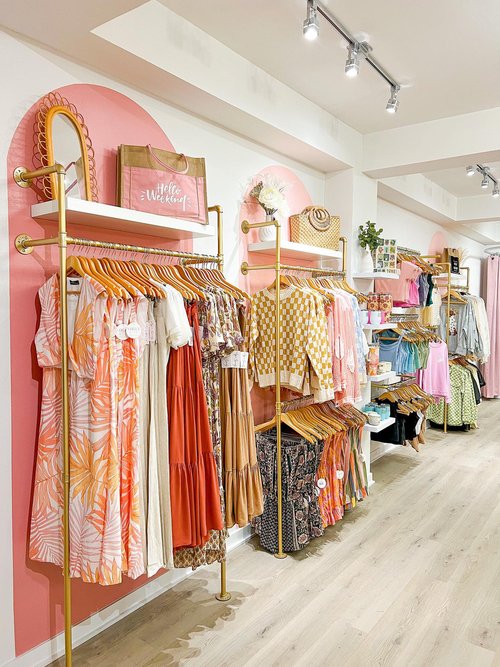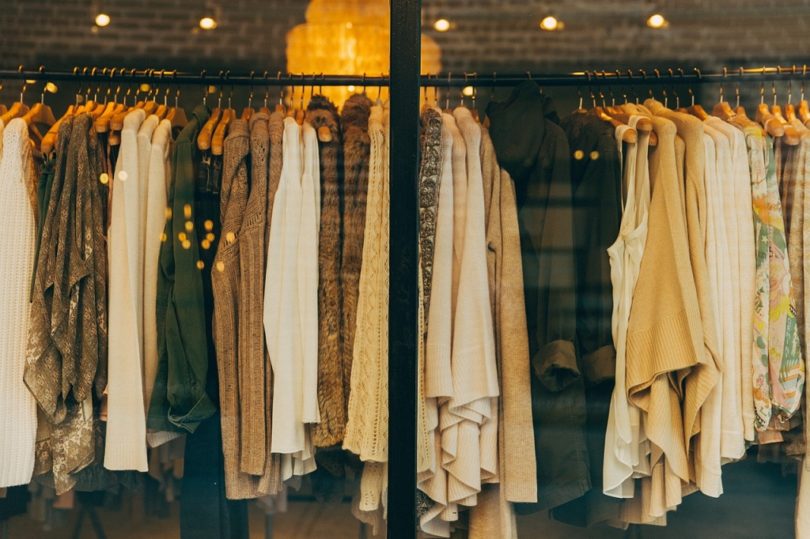Exactly how to Style Your Attires with Boutique Fashion Discovers
Wiki Article
A Deep Study the Globe of High-Fashion Runways: Comprehending Apparel as Art
High-fashion paths have emerged as sectors where clothes transcends its practical beginnings, progressing right into an advanced type of artistic expression. Developers, similar to skillful artists, weave complex stories with color, kind, and material, redefining and testing traditional norms beauty standards. These shows are a lot more than mere screens; they are immersive experiences, where every stitch and joint narrates abundant with cultural significance and avant-garde innovation. As we check out these sartorial spectacles, we must ponder: what function does style play fit societal values, and how does it mirror the ever-changing tapestry of human feeling and identity?The Evolution of Runway Shows
The trajectory of path shows has changed substantially over the decades, advancing from special market events to exciting eyeglasses that blend fashion with art. Generally, path programs were intimate affairs, kept in ateliers or little venues, mostly participated in by purchasers and market insiders. These very early presentations concentrated on the garments' craftsmanship and industrial stability, offering a functional and straight display screen of seasonal collections.As the apparel industry broadened, the nature of path shows began to alter. The 1970s and 1980s marked a turning factor, with designers seeking to differentiate themselves via even more staged presentations. This age saw the increase of fancy sets, choreographed versions, and thematic stories, heralding a brand-new age where the path ended up being an experiential platform. The shows changed into a kind of narration, where each collection communicated a distinctive narrative or idea.
Recently, innovation and social media sites have better transformed path programs, making them easily accessible to an international audience. Livestreaming and electronic platforms have actually democratized style, allowing lovers worldwide to witness these events in real-time (boutique fashion). This evolution reflects a more comprehensive cultural change, where high-fashion paths serve as a dynamic crossway of efficiency, advancement, and design
Designers as Enthusiast Artists
Just how have designers transcended their roles to end up being visionary musicians? Designers in the high-fashion industry have obscured the lines between useful garment production and the theoretical world of art. This improvement is apparent in the means they approach their collections, not just as apparel yet as extensive expressions of feeling, identification, and culture. By embracing imaginative self-controls such as sculpture, painting, and progressive installments, designers craft garments that test conventional style norms and elevate them to art types.Visionary designers attract inspiration from a myriad of resources, consisting of abstract art, historical recommendations, and individual narratives. They possess an unique capability to visualize and emerge ideas that press the boundaries of traditional style, frequently redefining visual standards at the same time. This creative resourcefulness is showcased via dramatic silhouettes, ingenious products, and intricate craftsmanship, which welcome audiences to experience style as more than just wearable items.
In addition, the runway serves as a canvas for these musicians, where illumination, music, and set layout coalesce to develop immersive experiences. These discussions are not simply screens of apparel yet are orchestrated efficiencies that evoke feeling and prompt idea, attesting the designer's role have a peek at these guys as a true musician in the modern cultural landscape.
Cultural Influences in vogue
Social tapestry weaves its complex patterns into the material of style, affecting developers globally. The vibrant interchange of cultural stories, customs, and symbols informs and inspires collections that grace high-fashion paths.The impact of society on fashion is usually seen in the reinterpretation of standard garments and patterns. For example, using Japanese kimonos, Indian saris, or African prints in modern style shows a mix of cultural authenticity and modern visual appeals. Developers such as Valentino's Pierpaolo Piccioli and Alexander McQueen's Sarah Burton have been recognized to integrate abundant cultural themes right into their couture collections, equating background right into wearable art.

Innovation in Fabric and Design
Innovation in textile and style regularly improves the landscape of high-fashion, pressing limits and redefining possibilities. Designers are increasingly exploring the assimilation of innovation, such as 3D printing, which enables for the development of complicated frameworks that click this site were previously inconceivable.The fashion industry is experiencing a rise in the use of environment-friendly products, derived from recycled plastics, natural fibers, and also naturally degradable elements. Designers are embracing these materials to craft garments that are both aesthetically striking and aware of their environmental impact.
In regards to design, avant-garde shapes and speculative forms are constantly reinventing the path. By integrating sophisticated strategies and unconventional materials, designers grow garments that obscure the line in between style and art, establishing brand-new standards for creativity and expression in the high-fashion ball.
Effect of Fashion on Society
Fashion wields a profound influence on culture, working as both a reflection of cultural identity and a driver for social adjustment. Via its advancement, style has actually mirrored social changes, enveloping the zeitgeist of different ages. As an example, the flapper gowns of the 1920s personified a newly found feeling of ladies's freedom, while the vibrant prints of the 1960s resembled the revolutionary spirit of the time. High-fashion paths, in particular, serve as platforms for challenging standards and redefining appeal criteria. Developers utilize these venues to resolve pushing social concerns, from sustainability to variety, thus forming public discourse.Furthermore, fashion has the power to bridge social gaps, cultivating understanding and recognition amongst diverse teams. As globalisation speeds up, the cross-cultural exchange of style concepts ends up being increasingly substantial, promoting inclusivity and variety. The rise of streetwear, stemming from metropolitan subcultures, illustrates exactly how style can go beyond socio-economic limits, granting people a method of self-expression and empowerment.
Essentially, style is not merely about looks; it is a dynamic pressure that influences values, perspectives, and societal progression (boutique fashion). By continuously engaging with social and social currents, style stays an integral part of the cumulative human experience
:no_upscale()/cdn.vox-cdn.com/uploads/chorus_image/image/62476024/DrielyS-4990.0.0.0.jpg)
Conclusion
Developers, similar to visionary musicians, coordinate collections that show identity, emotion, and cultural narratives, testing standard looks. This intersection of fashion and artistry not just visit this web-site mesmerizes target markets around the world but additionally affects societal assumptions and promotes a much deeper recognition for cultural variety.
Social tapestry weaves its intricate patterns into the material of fashion, influencing developers worldwide.Fashion possesses a profound influence on culture, offering as both a reflection of cultural identity and a driver for social adjustment.
Report this wiki page